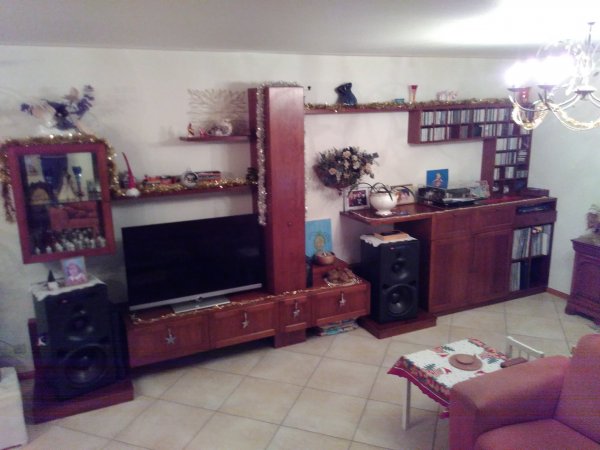Can you please elaborate? I would think that the larger the driver's surface area would = less beaming assuming the same frequency across comparative drivers.
The idea that a larger driver has a smaller (narrower), rather than larger (wider) radiation pattern is certainly counter-intuitive. But let me try to explain:
Imagine you are 45 degrees off-axis of a woofer which has a nominal diameter of 6 inches and an actual cone diameter of 5 inches. The nearest edge of the cone is about 1.75 inches closer to your ears than the middle of the cone. That 1.75-inch difference is insignificant at say 100 Hz, where it is equal to about 1/77th of a wavelength.
But up at 3.8 kHz, that 1.75-inch path length difference is equal to one-half wavelength. So at 3.8 kHz, the output from the middle of the cone arrives 1/2 wavelength behind the output from the nearest edge of the cone, which corresponds with being 180 degrees out-of-phase, and therefore the two cancel each other out.
Now in practice there are many points on the cone and therefore many different off-axis path lengths, so the net result is only partial cancellation. The general trend is, as the off-axis angle increases, the net amount of cancellation also increases. This is where beaming comes from.
And the larger the cone diameter, the lower the frequency at which these off-axis path-length-difference cancellations start to occur.
Imagine now a woofer with a nominal diameter of 15 inches and an actual cone diameter of 13 inches. At 45 degrees off-axis, the path length difference between the nearest edge of the cone and the middle of the cone is about 4.5 inches, which in turn corresponds with one-half wavelength at 1.5 kHz. So we see that a 13 inch cone's pattern-narrowing at 1.5 kHz is comparable with a 5-inch cone's pattern-narrowing up at 3.8 kHz. (Once again, there are many points on the cone so the net cancellation is only partial, and the general trend is for the pattern to become narrower as we go up in frequency).
As a ballpark rule of thumb, when the cone diameter is equal to one wavelength, the radiation pattern has narrowed to 90 degrees - that is, the off-axis energy is -6 dB at 45 degrees to either side of the centerline. So... if "beaming" is considered to occur when the radiation pattern has narrowed to 90 degrees, we might say that beaming sets in at 2.7 kHz for the 5-inch cone ("6-inch" woofer), and at 1.0 kHz for the 13-inch cone ("15-inch" woofer).
If we're talking about 1" dome tweeters the path length differences are of course much less, but still beaming does start to set in north of about 13.5 kHz. That's where the dome diameter is equal to one wavelength, and so it is where the radiation pattern has usually narrowed to about 90 degrees (-6 dB at 45 degrees off-axis to either side).
I hope this helps. Let me know if I need to try again.


